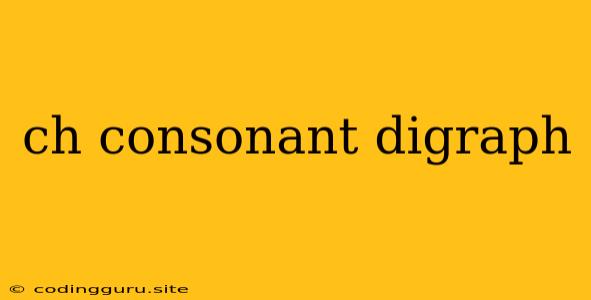What are consonant digraphs?
Consonant digraphs are two letters that come together to make one sound. They are an important part of English spelling, as they help to create sounds that can't be represented by a single letter.
What is a digraph?
A digraph is a combination of two letters that represent a single sound. Digraphs can be made up of vowels, consonants, or a combination of both.
What are some examples of consonant digraphs?
Here are some common consonant digraphs:
- ch as in chair, church, chocolate
- sh as in ship, shoe, fish
- th as in thin, think, thumb
- ph as in phone, graph, photo
- wh as in where, what, when
- ck as in back, rock, sick
- tch as in catch, watch, stitch
- dge as in edge, judge, bridge
How can I help my child learn consonant digraphs?
There are many ways to help your child learn consonant digraphs:
- Read together: When you read to your child, point out the consonant digraphs in the words.
- Sing songs: There are many songs that feature consonant digraphs.
- Play games: There are many games that can help children learn consonant digraphs, such as "I Spy" or "Word Search".
- Write together: Encourage your child to write words that include consonant digraphs.
Why are consonant digraphs important?
Consonant digraphs are important because they help children to:
- Decode words: By understanding consonant digraphs, children can sound out words more easily.
- Spell words correctly: Children will be able to spell words that contain consonant digraphs more accurately.
- Read fluently: When children can decode words quickly and accurately, they can read more fluently.
Can you give me an example of how consonant digraphs work?
Let's look at the word "chair". The ch digraph represents the /ch/ sound. We know that the ch makes the /ch/ sound because we have learned that it represents that sound in other words like "church" and "chocolate".
How can I tell if a consonant digraph is making a different sound?
Sometimes, consonant digraphs can make sounds other than the one they usually represent. For example, the gh in "enough" makes the /f/ sound. This can be confusing for children, but there are ways to help them learn.
- Look for patterns: Encourage your child to look for patterns in words that contain consonant digraphs. For example, the gh in "enough" makes the /f/ sound, but the gh in "ghost" makes the /g/ sound.
- Practice with word lists: Word lists that focus on specific consonant digraphs can help children to learn the different sounds they can make.
Tips for Learning Consonant Digraphs:
- Start with the most common consonant digraphs: Begin with the consonant digraphs that are used most frequently, such as ch, sh, and th.
- Use multi-sensory learning: Incorporate different senses into your teaching, such as visual, auditory, and kinesthetic.
- Make it fun! Children learn best when they are having fun. Use games, songs, and other activities to make learning consonant digraphs enjoyable.
Conclusion
Consonant digraphs are an important part of English spelling. By understanding how consonant digraphs work, children can become more confident and fluent readers and spellers. It is important to introduce these concepts in a fun and engaging way to help children learn and retain the information.
